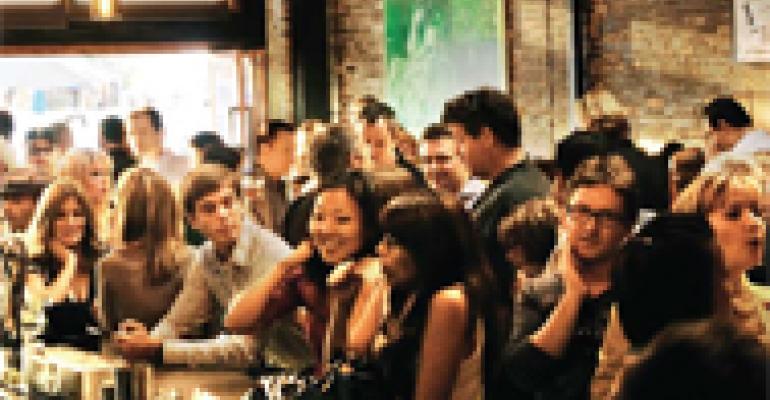
Geography-based themes are proven winners in the restaurant business, with the idea being to name your operation after a place that has a better climate and/or a more glamorous vibe than the one it's actually in. That's why you'll find operations like a Key West Café in Cleveland, a Santa Fe Café in Seattle and seven — count 'em — Jackson Holes in New York City. Just pick a city and you've got a rationale for your menu, design and décor.
But Rush Street in Los Angeles has given an unusual spin to this naming notion. It's meant to evoke a mile-long stretch in downtown Chicago that's lined with restaurants and bars and, most importantly, people. Fair enough. But what's the attraction to Angelenos, few of whom harbor fantasies about traveling to a Midwest city notorious for bad weather to experience Rush Street, Chicago-style?
After all, Southern California has a premier warm-weather climate and Culver City, where Rush Street is located, is enjoying a restaurant renaissance right now. The town is a movie-making mecca that's home to Sony Pictures Studio and other high-powered entertainment companies. It's likely that few individuals within this restaurant's intended customer base have ever visited the actual Rush Street in Chicago; many more probably don't even know where or what it is, or why they'd want to go.

But what they do know is that they're in love with the California-ized version of it that's sprung up in L.A. Rush Street is big (6,000 square feet) and bustling (total capacity: 286), qualities in short supply in or near Culver City. The place has drawn huge crowds since it opened in July, testimony to its positioning as a hip-enough, although not-totally-Hollywood-hip, nightspot. This lack of attitude has struck a nerve with patrons.
Rush Street is the brainchild of native Chicagoan Brian McKeaney, whose family owns 13 restaurants on the Rush Street strip, six of them located on a single block. Even though restaurant operations are in his DNA, McKeaney left the family business to move to Southern California, hooking up with Culver City-based Patchett Kaufman Entertainment (producers of ALF and many other TV shows and movies). Now he's partners with Tom Patchett and Ken Kaufman in Rush Street. So far, on both concept and execution, the trio looks like geniuses.
Their success has come even though not much about Rush Street, other than its name, is particularly reminiscent of Chicago. The design and décor — plenty of exposed brick and beams — are comfortable and stylish, but could have come from anywhere. And you'd think executive chef Dave Northrup's eclectic menu would offer more in the way of Chi-town favorites like Italian beef, deep-dish pizza or Chicago-style hot dogs than it does.

Instead, it's California items all the way, including starters like tataki nachos (seared Ahi, avocado, slaw and wonton chips, $13) and roasted butternut squash bruschetta ($9); entrees like seared sand dab almondine ($17) and curried pumpkin ravioli (with smoked tofu, peppers, onions, toasted pumpkin seeds $15); and sides like top-seller baked mac and cheese (blend of local farmhouse cheeses, $7) and truffle asiago fries ($7). Deep-dish pizza is available as a special on Monday nights, but the regular pizza menu has more-contemporary offerings such as marguez sausage and roasted peppers ($13) and white pie with truffle oil ($12).
Likewise, the beverage lineup has scant connection to the restaurant's nominal roots in Chicago. The extensive beer and wine list have plenty to offer, just no Chicago-area favorites. The ten-microbrews-on-tap lineup includes Old Speckled Hen from England and Kona Longboard Lager from Hawaii ($6 apiece), but nothing from Chicago brewer Goose Island. The cocktail list offers old and new classics, none of their names linked to Chicago or Rush Street. All featured cocktails go for $14.
The place is really more like Rush Street re-imagined for a California crowd, with the re-imagining getting many things right. One key: multiple venues within a single operation so customers can customize their experience. There's the regular dining room and its king-size booths, plus a sizable front patio, the bar area, an upstairs bar and a rooftop patio.
The result is a restaurant, bar and lounge that you could call anything and plunk down almost anywhere in the country, and it would still attract the same kind of crowds it's drawing in L.A. Rush Street demonstrates that a restaurant's name and putative theme matter less than they once did. If you're wondering what to call your next restaurant, do it like these guys did. Nail down the location, menu and design first. Get those right and any name can work.





